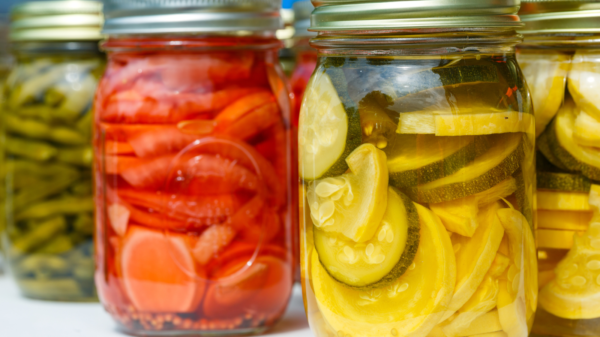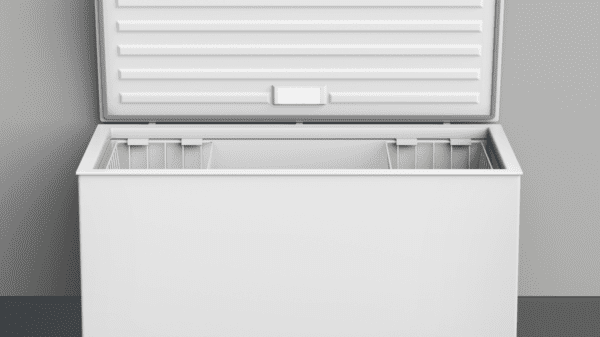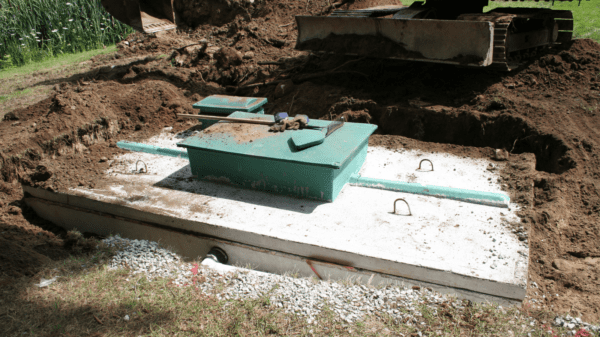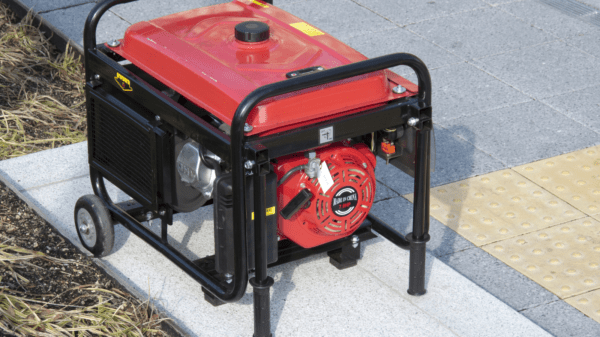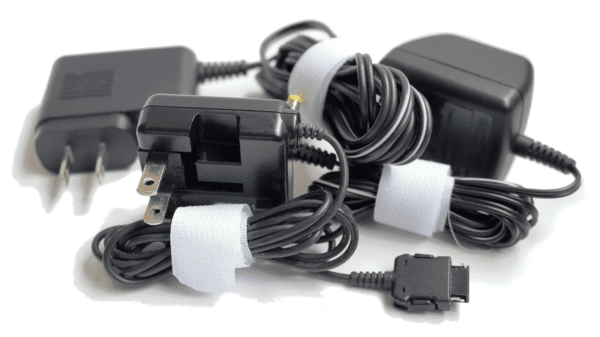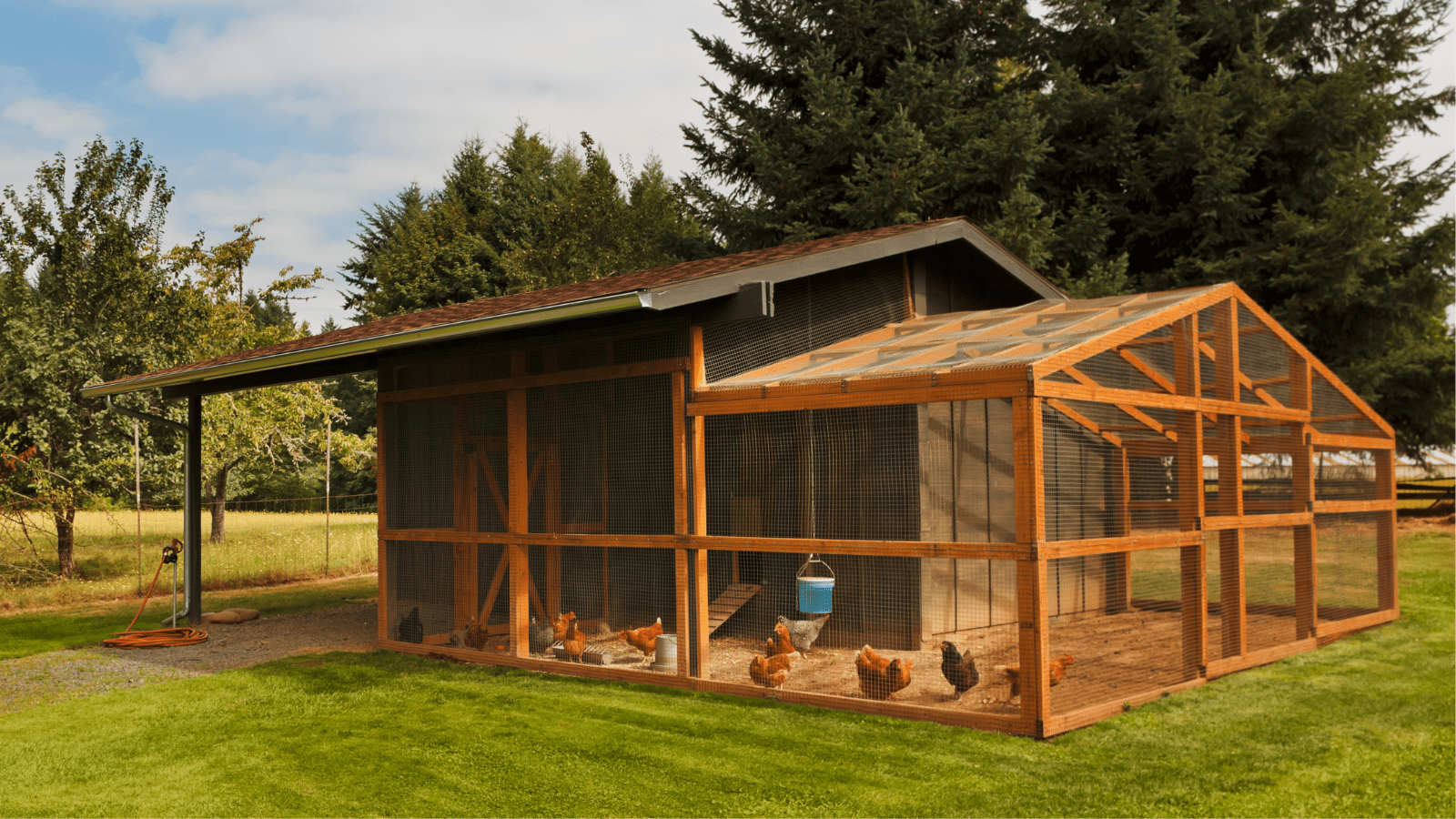Keeping backyard chickens has become increasingly popular over the years as people have become more interested in sustainable living and self-sufficiency. Whether you are a seasoned poultry farmer or just starting out, a good quality chicken coop is crucial to the health and well-being of your birds. In this article, we will provide a step-by-step guide on how to build and maintain a chicken coop, as well as some tips from noted experts in the field.
Table of Contents
Why Build a Chicken Coop?
Before we dive into the specifics of building and maintaining a chicken coop, it’s important to understand why having a coop is so important. A chicken coop provides a safe and secure space for your birds to sleep, eat, and lay eggs. It also protects them from predators such as foxes, raccoons, and birds of prey.
In addition to providing a safe space for your birds, a chicken coop also makes it easier to manage their care. With a designated area for feeding and watering, you can ensure that your birds are getting the nutrition they need. A coop also makes it easier to collect eggs and clean up after your birds.
Chick Coop Cost
When considering building or purchasing a chicken coop, it’s important to factor in the initial costs as well as the ongoing maintenance costs. Here are some things to consider:
| Type of Coop | Estimated Cost |
|---|---|
| Build Your Own | $500-$1,100 |
| Omlet Eglu Coop | $500-$800 |
| PawHut Wooden Chicken Coop | $400-$600 |
| TRIXIE Pet Products Chicken Coop | $500-$900 |
Initial Costs
The initial costs of building or purchasing a chicken coop can vary depending on the size and type of coop you choose. If you decide to build your own coop, you will need to purchase materials such as wood, chicken wire, screws, and hardware. The cost of these materials can range from a few hundred dollars to over a thousand dollars depending on the size and complexity of your coop.
If you decide to purchase a pre-made coop, you can expect to pay anywhere from a few hundred dollars to several thousand dollars depending on the size and quality of the coop.
Maintenance Costs
Once your coop is built or purchased, you will need to factor in ongoing maintenance costs. This includes the cost of bedding, feed, and other supplies such as water containers and feeders.
According to poultry expert Lisa Steele, “The cost of maintaining a chicken coop can vary depending on the size of your flock and the type of feed you use. On average, you can expect to spend around $20-$30 per month on supplies for a small flock of 4-6 birds.”
In addition to the cost of supplies, you will also need to factor in the cost of cleaning and maintaining your coop. This includes the cost of disinfectants and other cleaning supplies, as well as any repairs or upgrades you may need to make to your coop over time.
Overall, the cost of building and maintaining a chicken coop can vary depending on a number of factors. It’s important to carefully consider your needs and budget before deciding whether to build or purchase a coop, and to factor in ongoing maintenance costs to ensure that you can provide your birds with a safe and healthy living space.
Building Your Chicken Coop
Now that we’ve discussed why a chicken coop is important, let’s dive into the specifics of how to build one. The following step-by-step guide will help you create a functional and safe space for your backyard chickens.
Chicken Coop Build Shopping List
If you decide to build your own chicken coop, you will need to purchase materials for the construction. Here is a shopping list to help you get started:
- Wood for the frame and siding: approximately 10-15 pieces of 2×4 lumber, 5-10 pieces of plywood or OSB, and 5-10 pieces of exterior siding, depending on the size of your coop.
- Chicken wire or welded wire mesh for the fencing: approximately 50-100 feet, depending on the size of your coop and the height of the fencing.
- Screws, nails, and other hardware for assembly: approximately 100-200 screws or nails, and various other hardware such as hinges and latches.
- Hinges for the doors and windows: 2-4 hinges per door or window, depending on the size and weight.
- Roofing material such as shingles or metal panels: enough to cover the entire roof of your coop, plus some extra for overlap.
- Nesting boxes: 1 nesting box per 4-5 chickens, so for an average flock of 6-8 chickens, you will need 2 nesting boxes.
- Perches: approximately 2-4 perches, depending on the size of your coop and the number of chickens.
- Bedding such as straw or pine shavings: approximately 1-2 bales of straw or 1-2 bags of pine shavings per month, depending on the size of your coop and the number of chickens.
- Water containers: 1 water container per 4-5 chickens, so for an average flock of 6-8 chickens, you will need 2 water containers.
- Feeder: 1 feeder per 4-5 chickens, so for an average flock of 6-8 chickens, you will need 2 feeders.
- Cleaning supplies such as a disinfectant and a broom: a bottle of disinfectant and a broom will last for several months, depending on how often you clean your coop.
| Item | Estimated Cost |
|---|---|
| Wood | $200-$500 |
| Chicken Wire/Mesh | $50-$100 |
| Screws, Nails, Hardware | $50-$100 |
| Hinges | $10-$20 |
| Roofing Material | $50-$150 |
| Nesting Boxes | $40-$80 |
| Perches | $20-$40 |
| Bedding | $10-$30 per month |
| Water Containers | $10-$20 |
| Feeder | $10-$20 |
| Cleaning Supplies | $20-$30 |
These quantities are estimates and will depend on the specific design and size of your coop. You may also want to consider purchasing additional materials such as insulation or heating elements if you live in a colder climate.
Step 1: Determine Your Needs
The first step in building a chicken coop is to determine your needs. Consider how many chickens you will have, the size of your backyard, and any local zoning regulations that may apply.
According to poultry expert and author Gail Damerow, “The most important thing to consider when building a chicken coop is the size and layout. Chickens need space to move around and access to fresh air and sunlight.”
Step 2: Choose Your Location
Once you’ve determined your needs, the next step is to choose a location for your chicken coop. You’ll want to choose an area that is well-drained, easily accessible, and provides shade and protection from the wind.
According to Lisa Steele, author of Fresh Eggs Daily, “The location of your coop is crucial. It needs to be protected from the elements, but also get plenty of fresh air and sunlight.”
Step 3: Design Your Coop
The design of your chicken coop will depend on your needs, the size of your backyard, and your personal preferences. There are many different coop designs to choose from, including A-frame, hoop, and traditional square or rectangular coops.
Steele recommends using a simple design for your first coop, stating, “Don’t overcomplicate things. A simple coop with good ventilation and easy access for cleaning and feeding is all you really need.”
Step 4: Gather Your Materials
Once you’ve designed your coop, the next step is to gather your materials. You’ll need wood, chicken wire, screws, and other hardware materials to build your coop.
According to the website Backyard Chickens, “You can purchase all of the materials you need at your local hardware or home improvement store. You may also be able to find some materials for free, such as pallets or scrap wood.”
Step 5: Build Your Coop
Now it’s time to start building your coop. Follow your design plans and use your materials to create the structure of your coop. You’ll want to make sure that it’s secure and able to withstand the elements.
Damerow recommends using hardware cloth or welded wire mesh to protect your birds from predators, stating, “The most common mistake people make when building a coop is not making it secure enough. Predators can easily tear through chicken wire, so it’s important to use a stronger material.”
Step 6: Add Nesting Boxes and Perches
Once the structure of your coop is complete, it’s
time to add nesting boxes and perches. Nesting boxes are where your chickens will lay their eggs, so it’s important to provide a clean and comfortable space for them. Perches provide a place for your birds to roost at night.
According to the University of Kentucky Cooperative Extension Service, “Nesting boxes should be at least 12 inches square and 12 inches deep. You’ll need one box for every four to five hens. Perches should be placed at least 18 inches above the floor and should be wide enough for your birds to comfortably perch.”
Step 7: Install Food and Water Containers
The final step in building your chicken coop is to install food and water containers. You can purchase these containers at your local feed store or online. Make sure that they are easily accessible for your birds and that they are cleaned regularly.
Maintaining Your Chicken Coop
Now that your chicken coop is built, it’s important to maintain it to ensure the health and well-being of your birds. Here are some tips for maintaining your chicken coop.
Keep it Clean:
Regularly clean your coop to prevent the buildup of bacteria and parasites. This will also help keep your birds healthy and prevent the spread of disease. According to Dr. Jacquie Jacob, a poultry expert at the University of Kentucky, “It’s important to clean your coop at least once a week. Remove any old bedding and debris, and disinfect the surfaces of your coop.”
Provide Fresh Bedding:
Your chickens will spend a lot of time in their coop, so it’s important to provide them with fresh bedding. This will help keep them comfortable and prevent the buildup of ammonia from their waste.
Steele recommends using natural materials for bedding, stating, “I like to use straw or pine shavings for bedding. Avoid using materials like cedar or newspaper, as they can be harmful to your birds.”
Check for Pests and Predators:
Regularly check your coop for signs of pests and predators. This includes looking for holes in your coop or fencing, as well as signs of rodents or insects.
According to the University of Minnesota Extension, “Preventing pests and predators from entering your coop is crucial. Use hardware cloth to cover all openings and make sure that your fencing is secure.”
Provide Fresh Water and Food:
Make sure that your birds have access to fresh water and food at all times. This will help keep them healthy and prevent dehydration.
Steele recommends using a gravity-fed waterer for your chickens, stating, “Gravity-fed waterers are easy to use and keep the water fresh. You can also use a feeder that allows your chickens to eat at their own pace.”
Purchasing a Chicken Coop
If you don’t have the time or resources to build your own chicken coop, there are many options available for purchase. Here are some things to consider when purchasing a chicken coop.
- Size: Make sure that the coop is the appropriate size for your birds. You’ll want to ensure that they have enough space to move around and access to fresh air and sunlight.
- Security: Look for a coop that is secure and able to protect your birds from predators. This includes strong fencing, secure doors and windows, and a roof to protect from birds of prey.
- Ease of Maintenance: Look for a coop that is easy to clean and maintain. This will make it easier to care for your birds and prevent the buildup of bacteria and parasites.
There are many different types of chicken coops available for purchase, including wooden coops, plastic coops, and portable coops. Here are some options to consider:
- Omlet Eglu Coop: This plastic coop is easy to clean and provides a secure space for your birds. It’s also lightweight and portable, making it easy to move around your backyard.
- PawHut Wooden Chicken Coop: This wooden coop features a spacious design with nesting boxes and perches. It’s also easy to clean and includes a ramp for easy access.
- TRIXIE Pet Products Chicken Coop: This wooden coop features a classic design with a large outdoor run and a secure nesting area. It’s also easy to clean and includes a removable tray for waste.
Final Thoughts
Setting up a chicken coop can be a fun and rewarding experience, but it’s important to take the time to plan and prepare before bringing home your first chickens. Whether you choose to build your own coop or purchase a pre-made one, make sure that it’s secure and well-maintained to keep your chickens safe and healthy. With a little bit of effort and investment, you can enjoy fresh eggs from your backyard chickens for years to come.
Let us know if you have any tips from your own chicken-raising experiences!









